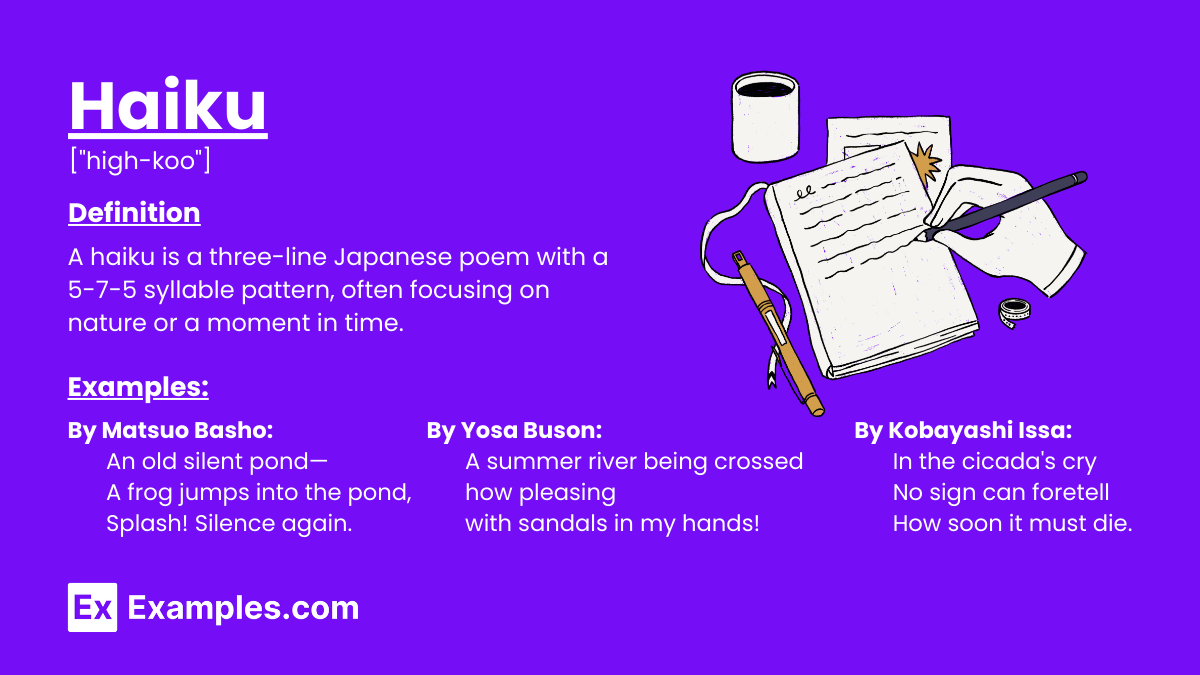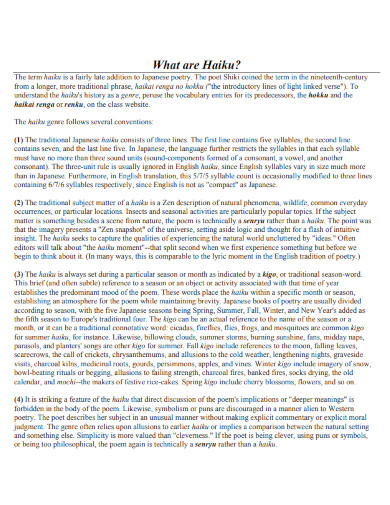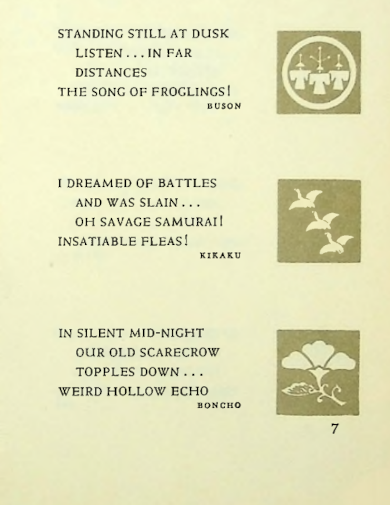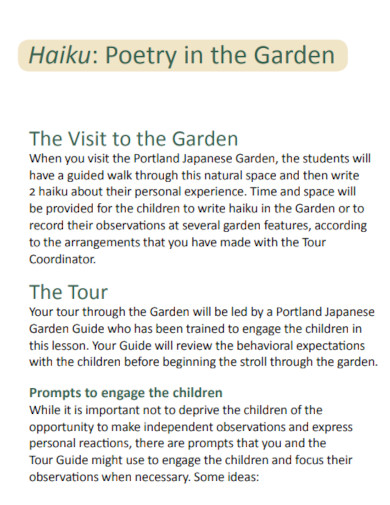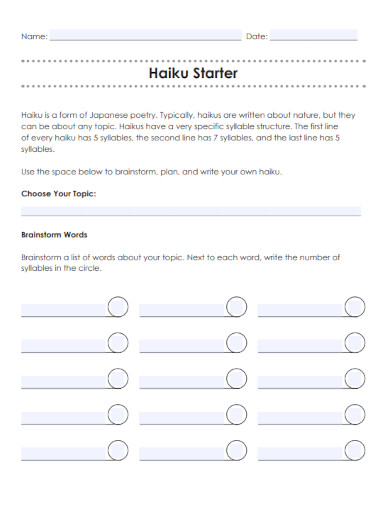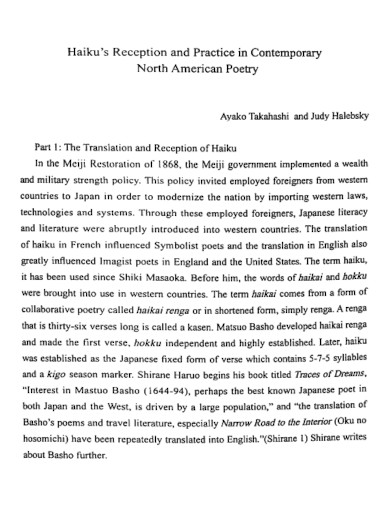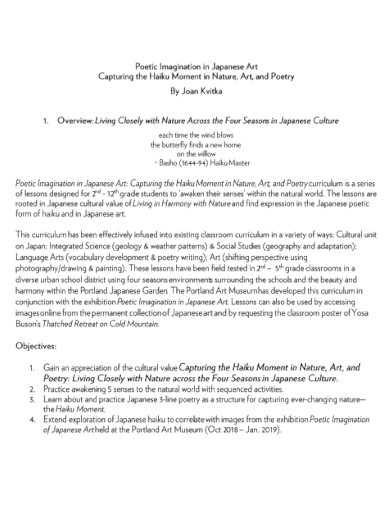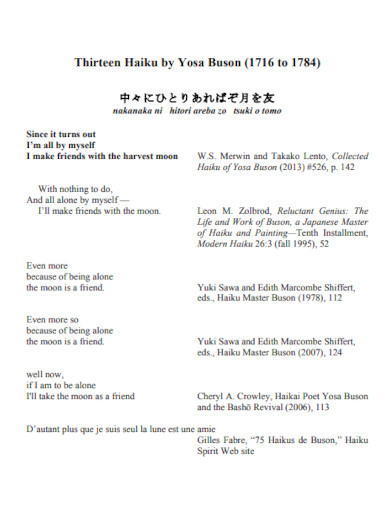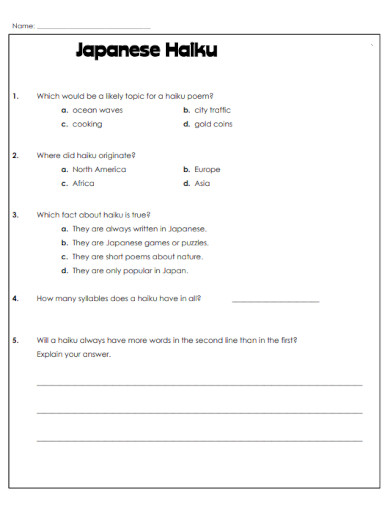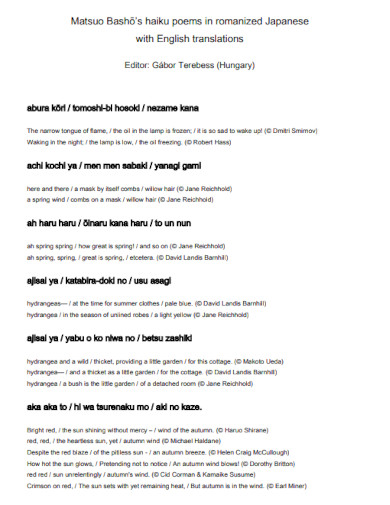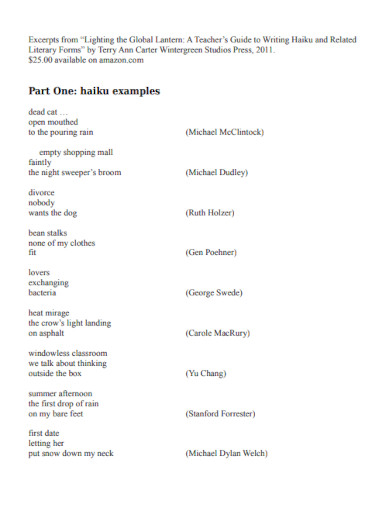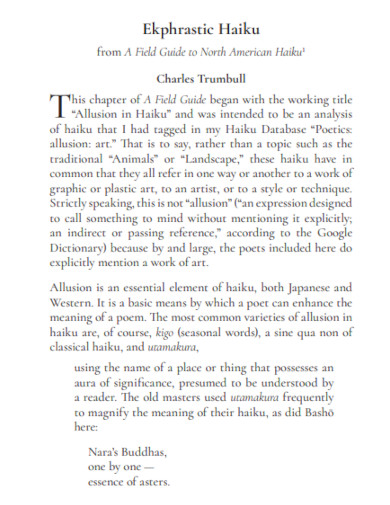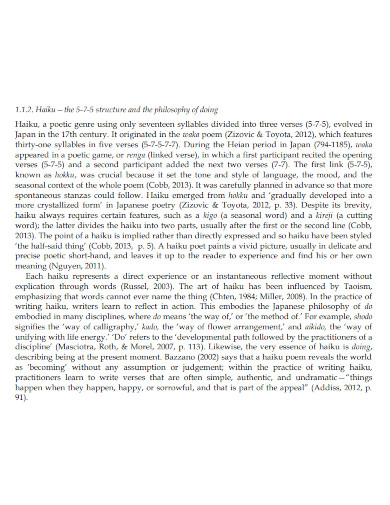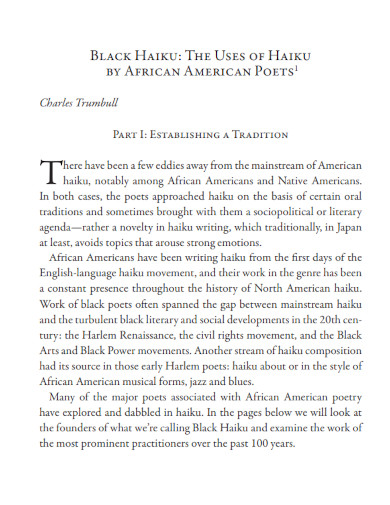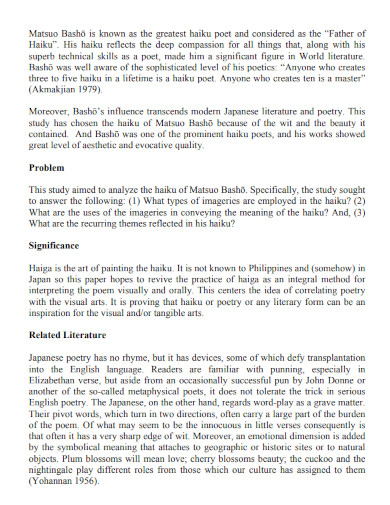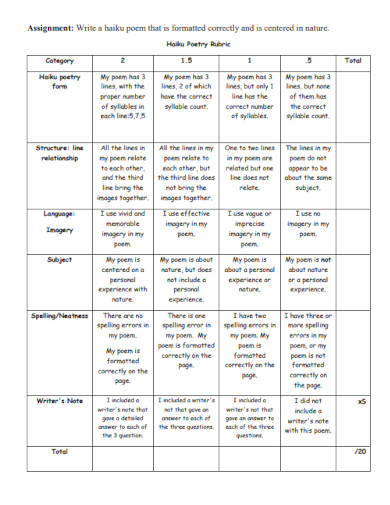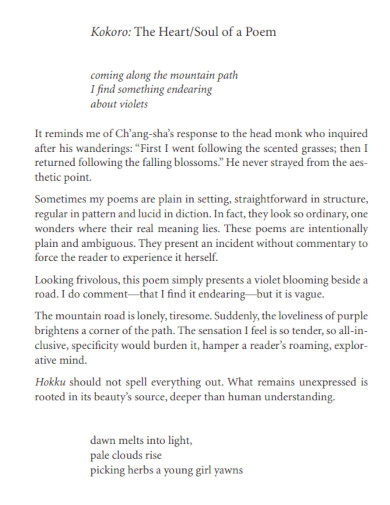Haiku
A haiku is a traditional form of Japanese poetry that captures a moment in nature or an emotional experience. It consists of three lines with a syllable pattern of 5-7-5. Haikus often focus on seasonal changes, evoking deep emotions through simplicity and precision. This concise form emphasizes imagery, creating vivid snapshots in the reader’s mind, making haikus a unique and impactful way to express profound thoughts.
Ancient Pond. Many of you who may understand what a haiku is may associate or may think about the famous poet in Japan Matsuo Basho (1644-1694) and his famous poem. “A small ancient pond! Behold the sound of water The frog plunges in.” When you think of haikus, you may already think of a short poem with a deeper meaning.
What Is a Haiku?
A haiku is a traditional Japanese poem with three lines and a 5-7-5 syllable structure. It captures moments in nature, conveying deep emotions and imagery with simplicity. Haikus emphasize the beauty of the natural world and the fleetingness of time, encouraging readers to pause and reflect.
Haiku Format
A haiku is a minimalist form of poetry originating from Japan. It follows a specific structure:
- Three Lines: Haikus consist of three lines.
- Syllable Pattern: The lines follow a 5-7-5 syllable pattern.
- First Line: 5 syllables
- Second Line: 7 syllables
- Third Line: 5 syllables
- Content: Traditionally, haikus focus on nature, seasons, or a specific moment, evoking deep emotion and imagery.
- Kigo: Often includes a seasonal word (kigo) to indicate the time of year.
- Kireji: May include a cutting word (kireji) to provide a pause or emotional shift.
Example:
An old silent pond
A frog jumps into the pond—
Splash! Silence again.
Haiku Examples:
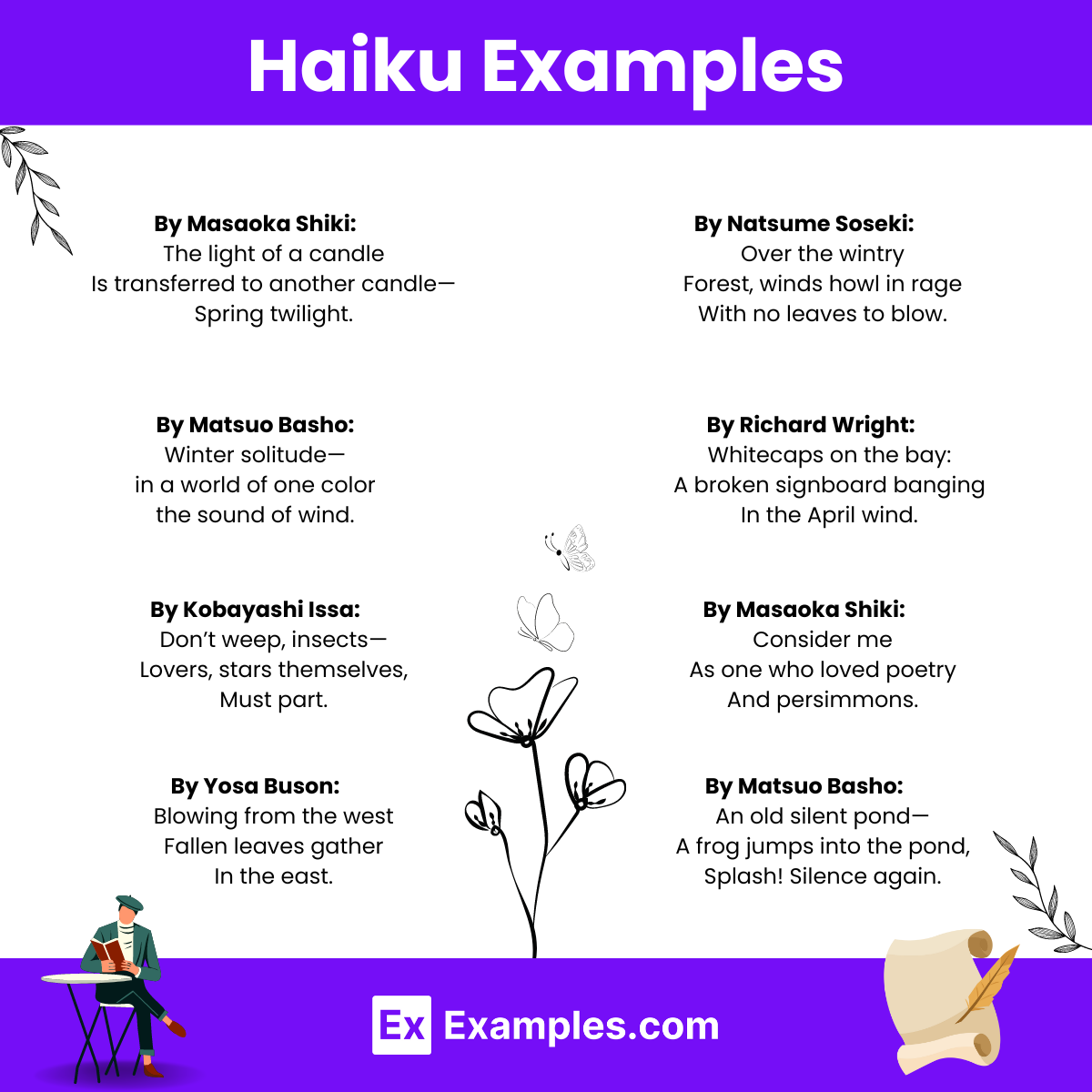
Haiku Examples about Nature
- Whispering willow
Sways gently in the spring breeze
Nature’s quiet song. - Morning dew glistens
On the spider’s delicate web
Sunrise in the mist. - Snowflakes gently fall
Blanketing the silent earth
Winter’s cold embrace. - Cherry blossoms bloom
Petals dance in the soft wind
Springtime’s fleeting grace. - Mountains touch the sky
Cloaked in a veil of white clouds
Nature’s majesty. - Autumn leaves cascade
In a flurry of colors
Nature’s grand finale. - Ocean waves crash loud
Against the rugged shoreline
Nature’s roaring voice. - A lone bird takes flight
Across the golden sunset
Freedom in the sky. - Gentle rain descends
Nourishing the thirsty earth
Life springs forth anew. - Tall pines stand silent
In the heart of the forest
Guardians of peace.
Haiku Examples about Love
- Heartbeats synchronize
Underneath the pale moonlight
Whispers of true love. - A rose in full bloom
Soft petals caressed by wind
Love’s tender embrace. - Eyes meet in silence
A universe in a glance
Timeless love begins. - Hand in hand we walk
Through life’s ever-changing path
Love’s journey unfolds. - Morning light reveals
Two souls wrapped in warm embrace
Love’s gentle waking. - Love’s first tender kiss
Lips meet in sweet harmony
World fades, hearts unite. - In your arms I find
A sanctuary of peace
Love’s eternal home. - Stars above us shine
Witness to our whispered vows
Love’s eternal light. - Through storm and through calm
Love’s unwavering beacon
Guides us evermore. - Two hearts beat as one
In the symphony of life
Love’s perfect duet.
Haiku Examples about life
- Sunrise to sunset
Moments weave the fabric fine
Life’s fleeting passage. - Paths cross and diverge
Journeys marked by steps unknown
Life’s unfolding map. - Raindrops on the leaves
Nourish roots unseen below
Life’s quiet support. - Waves upon the shore
Constant in their ebb and flow
Life’s endless rhythm. - A seed in the earth
Sprouts with hope and silent strength
Life’s promise fulfilled. - Whispers of the past
Echo in the hearts of old
Life’s lessons linger. - Butterfly takes flight
From cocoon to skies above
Life’s transformation. - Silent forest path
Footsteps tread where few have gone
Life’s quiet journey. - Stars across the night
Stories of the universe
Life’s grand tapestry. - Through joy and through pain
Every breath a precious gift
Life’s profound essence.
Haiku Examples for Students
- Books open, minds bloom
Knowledge flows like a river
Endless learning grows. - Pencils on paper
Ideas take flight, words dance
Students’ dreams unfold. - In a quiet room
Thoughts converge in silent work
Future paths are drawn. - Morning bell rings loud
Classrooms fill with eager minds
New lessons await. - Chalk dust in the air
Equations and histories
Students’ quest for truth. - Hands raise, questions spark
Curiosity ignites
Learning comes alive. - Recess bells echo
Laughter rings through open fields
Young hearts full of joy. - Notebooks filled with dreams
Pages turn with each new day
Students shape their world. - Group projects unite
Different minds in harmony
Collective wisdom. - Graduation day
Caps fly high in clear blue skies
Beginnings and ends.
Haiku Examples for Kids
- Butterfly so bright
Dancing in the summer sun
Wings of pure delight. - Rainbow in the sky
Colors arch from end to end
Magic in the air. - Kitten’s gentle purr
Curled up cozy on my lap
Soft as morning light. - Stars twinkle above
In the deep blue night they shine
Dreams take flight tonight. - Bubbles floating high
Sparkling in the warm sunlight
Pop and disappear. - Candy on my tongue
Sweet and sour, melts so fast
A taste of pure fun. - Little frogs leaping
From lily pad to lily
Splashes in the pond. - Snowflakes gently fall
Blanketing the world in white
Winter’s soft embrace. - Kite soaring so high
Dancing with the gentle breeze
Up towards the sky. - Sandcastle so grand
Built with tiny hands and dreams
Washed away by waves.
Haiku Examples with Interpretation
An old silent pond
A frog jumps into the pond—
Splash! Silence again.
Interpretation: This famous haiku by Matsuo Basho captures a moment of stillness in nature, interrupted by a frog’s jump. The sudden splash highlights the contrast between motion and stillness, symbolizing the fleeting nature of moments.
Morning dew glistens
On the spider’s delicate web
Sunrise in the mist.
Interpretation: This haiku illustrates the beauty of a morning scene. The dew on the spider’s web and the sunrise represent the intricate and delicate moments of life, emphasizing the wonder found in everyday observations.
Cherry blossoms fall
Softly on the river’s edge
Spring’s fleeting beauty.
Interpretation: Cherry blossoms are a symbol of the transient nature of life. Their short-lived bloom and gentle fall into the river remind us of the fleeting beauty of moments and the passage of time.
Winter winds howl loud
Through the bare and frozen trees
Nature’s quiet strength.
Interpretation: This haiku depicts the harshness of winter and the resilience of nature. The bare trees and howling wind symbolize endurance and strength amidst adversity.
A lone bird takes flight
Across the golden sunset
Freedom in the sky.
Interpretation: The bird flying at sunset represents freedom and the pursuit of dreams. The golden sunset enhances the feeling of limitless possibilities and the beauty of embarking on new journeys.
Children’s laughter rings
Echoing through the playground
Joy in purest form.
Interpretation: This haiku captures the essence of childhood happiness. The sound of laughter in a playground symbolizes innocence and the simple, unadulterated joy found in play.
Waves crash on the shore
Endless dance of sea and land
Life’s constant rhythm.
Interpretation: The interaction between waves and shore represents the ongoing cycles in life. The endless dance signifies the perpetual motion and balance of nature, mirroring life’s rhythms and changes.
New leaves sprout on trees
After the long winter’s sleep
Hope awakens fresh.
Interpretation: The emergence of new leaves after winter signifies renewal and hope. This haiku reflects the cycle of seasons and the rejuvenation that follows periods of dormancy or hardship.
Fireflies in the night
Tiny lanterns in the dark
Magic lights the way.
Interpretation: The fireflies lighting up the night represent moments of magic and wonder in darkness. This haiku highlights the beauty and mystery of nature, even in the quiet and dark times.
Rain falls on dry earth
Thirsty ground drinks eagerly
Life revived once more.
Interpretation: This haiku illustrates the revitalizing power of rain. The thirsty ground drinking eagerly symbolizes renewal and the restoration of life, emphasizing the importance of sustenance and nourishment.
More Haiku Samples & Examples
1. Haiku Conventions
2. Civil War Battle Haiku Examples
3. Japanese Haiku
4. Haiku Poetry in the Garden
5. Haiku Starter
6. A Haiku
7. Art Haiku
8. Thirteen Haiku by Yosa Buson Friendship
9. Short Japanese Haiku Poetry
10. Haiku Poems in Romanized Japanese
11. Haiku Example
12. Ekphrastic Haiku
13. Haiku Research Article
14. Haiku Poets
15. Traditional Haiku
16. Haiku Sample
17. Writing Haiku
18. Haiku Poetry Rubric
19. Haiku Masters
20. Famous Haiku
Haiku Rules
- Structure: Haikus consist of three lines.
- First Line: 5 syllables
- Second Line: 7 syllables
- Third Line: 5 syllables
- Content: Traditionally, haikus focus on nature, seasons, or moments in time. They often capture a brief, vivid image or emotion.
- Kigo (Seasonal Word): A haiku typically includes a kigo, a word or phrase that indicates the season or time of year. This helps set the scene and provides context.
- Kireji (Cutting Word): In Japanese haikus, a kireji is used to provide a pause or break in the flow of the poem. This creates a juxtaposition or contrast, adding depth and emotion. In English, punctuation can serve a similar purpose.
- Imagery: Haikus rely on sensory details and imagery to evoke a specific moment or feeling. The language should be concise and evocative, painting a clear picture in the reader’s mind.
- Simplicity: The language used in haikus should be simple and direct, capturing the essence of the moment without unnecessary words.
- Present Tense: Haikus are typically written in the present tense to convey immediacy and a sense of being in the moment.
- Emphasis on Nature: While modern haikus can explore various themes, traditional haikus emphasize the natural world and human interaction with it.
- Emotional Resonance: Haikus often aim to evoke a specific mood or emotion, creating a connection between the reader and the scene described.
- No Rhyme: Haikus do not require rhyme; the focus is on the rhythm and the syllable count.
How are Haiku different from other Poems?
Haikus are unique in several ways compared to other forms of poetry:
- Structure:
- Haiku: Consists of three lines with a strict syllable pattern of 5-7-5.
- Other Poems: Can vary widely in structure, length, and form, including sonnets (14 lines), limericks (5 lines), free verse (no set structure), and others.
- Syllable Count:
- Haiku: Precisely 17 syllables, divided into three lines.
- Other Poems: Syllable count is often flexible and varies according to the poem’s form and style.
- Content Focus:
- Haiku: Traditionally focuses on nature, seasons, and moments in time, often capturing a fleeting, vivid image or emotion.
- Other Poems: Can cover a wide range of subjects, including love, death, social issues, personal experiences, and abstract concepts.
- Language and Imagery:
- Haiku: Uses simple, direct language and relies heavily on sensory imagery to evoke a specific moment or feeling.
- Other Poems: May use more elaborate language, metaphors, and extended imagery. They can also be more narrative or descriptive.
- Kigo (Seasonal Word):
- Haiku: Often includes a kigo, a word or phrase that indicates the season or time of year, adding context and depth.
- Other Poems: Seasonal references may or may not be used, depending on the poem’s theme and purpose.
- Kireji (Cutting Word):
- Haiku: Uses a kireji, or cutting word, to provide a pause or shift in the poem, creating juxtaposition and adding emotional impact. In English, punctuation can serve this purpose.
- Other Poems: Do not typically use a specific cutting word; shifts and pauses are created through punctuation, line breaks, or changes in tone.
- Simplicity and Conciseness:
- Haiku: Emphasizes brevity, simplicity, and directness, capturing the essence of a moment in just three lines.
- Other Poems: Can be more expansive and detailed, allowing for greater complexity and development of ideas.
- Cultural Origin:
- Haiku: Originates from Japan and is deeply rooted in Japanese culture and aesthetics.
- Other Poems: Come from a wide range of cultural and literary traditions around the world, each with its own unique characteristics.
Example Haiku:
Old pond—
frog leaps in,
water’s sound.
Example Other Poem (Sonnet):
Shall I compare thee to a summer’s day?
Thou art more lovely and more temperate:
Rough winds do shake the darling buds of May,
And summer’s lease hath all too short a date:
Steps to Writing a Haiku
- Understand the Structure:
- A haiku consists of three lines with a syllable pattern of 5-7-5.
- First Line: 5 syllables
- Second Line: 7 syllables
- Third Line: 5 syllables
- Choose a Theme:
- Traditional haikus focus on nature, seasons, or a specific moment in time.
- Modern haikus can explore various themes, but nature remains a popular subject.
- Select a Moment or Image:
- Focus on a specific moment or vivid image that captures the essence of your theme.
- Think about a scene that evokes strong sensory experiences or emotions.
- Incorporate a Kigo:
- Use a seasonal word (kigo) to set the context and indicate the time of year.
- Examples of kigo include “cherry blossoms” for spring, “snow” for winter, “fireflies” for summer, and “autumn leaves” for fall.
- Use Simple, Direct Language:
- Keep your language concise and straightforward.
- Avoid unnecessary words and focus on clarity and precision.
- Create a Juxtaposition:
- Use contrasting images or ideas to add depth and complexity.
- Consider incorporating a kireji (cutting word) or punctuation to create a pause or shift in the poem.
- Write the First Draft:
- Begin by jotting down your ideas without worrying about the syllable count.
- Focus on capturing the moment or image you want to convey.
- Count the Syllables:
- Adjust your lines to fit the 5-7-5 syllable pattern.
- Use a syllable counter or read the lines aloud to ensure accuracy.
- Revise and Refine:
- Edit your haiku for clarity, precision, and impact.
- Remove any words that do not contribute to the overall effect.
- Read Aloud:
- Read your haiku aloud to check the rhythm and flow.
- Ensure that it captures the moment or emotion you intended.
What is a haiku?
A haiku is a traditional Japanese poem with three lines, following a 5-7-5 syllable pattern, often focusing on nature or a specific moment.
What is the syllable pattern of a haiku?
The syllable pattern is 5 syllables in the first line, 7 in the second, and 5 in the third, totaling 17 syllables.
What themes are common in haikus?
Common themes include nature, seasons, and moments in time. Modern haikus may also explore various personal or abstract themes.
What is a kigo?
A kigo is a seasonal word used in haikus to indicate the time of year, adding context and depth to the poem.
What is a kireji?
A kireji, or cutting word, provides a pause or shift in the haiku, creating juxtaposition and adding emotional impact. In English, punctuation often serves this role.
Can haikus rhyme?
Haikus do not typically rhyme. The focus is on the syllable count, imagery, and capturing a moment rather than on rhyme.
How do you count syllables in a haiku?
Count the number of vowel sounds in each line. Each sound typically represents one syllable. Reading the lines aloud can help ensure accuracy.
Can haikus be about modern topics?
Yes, modern haikus can explore various topics beyond nature, including personal experiences, emotions, and contemporary issues.
What makes haikus unique?
Haikus are unique due to their brevity, precise syllable structure, focus on nature, and use of vivid imagery to capture specific moments.
How do you start writing a haiku?
Begin by choosing a theme, select a specific moment or image, and draft the lines, ensuring they fit the 5-7-5 syllable pattern. Use simple, direct language.



